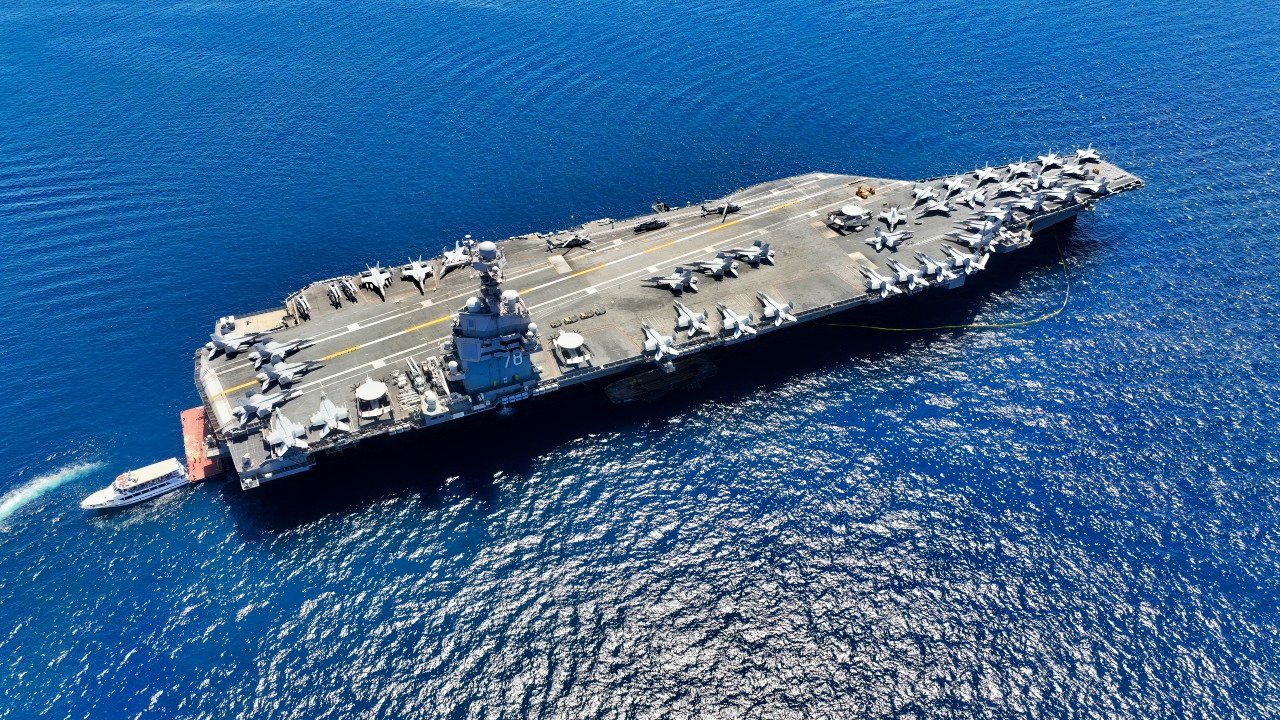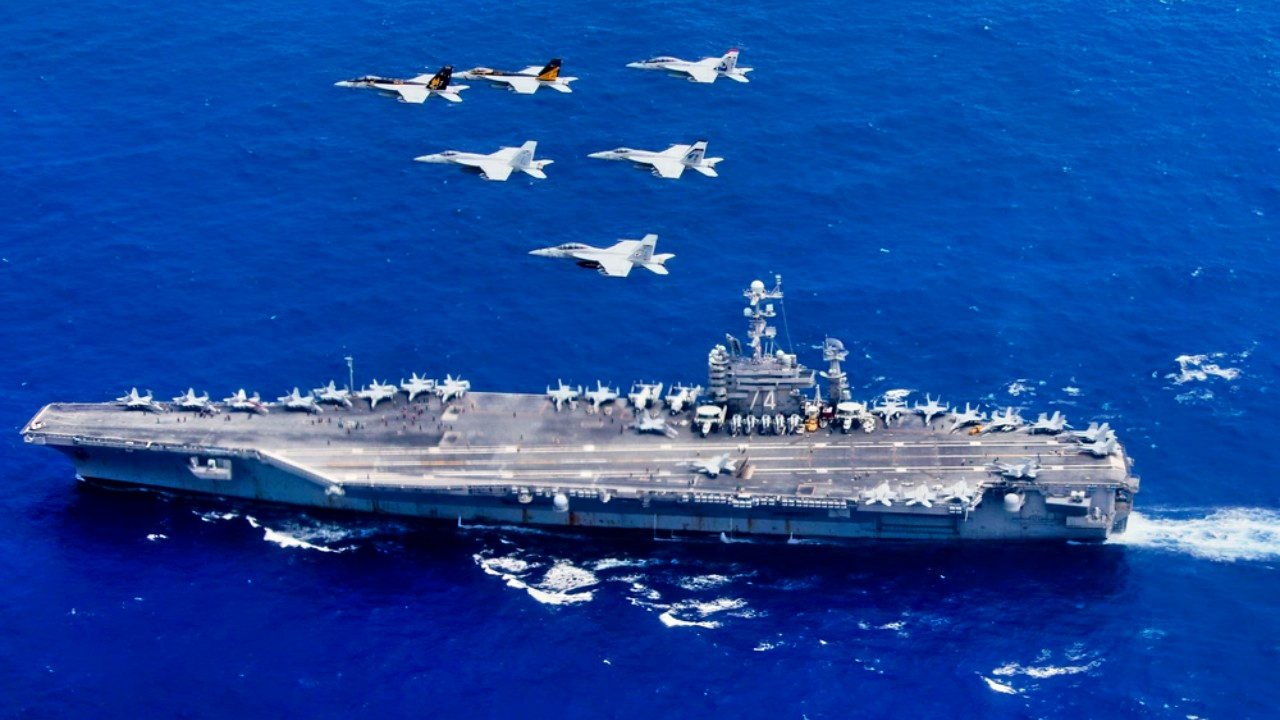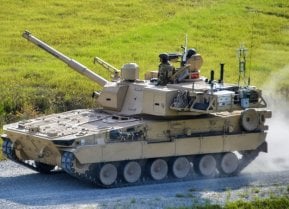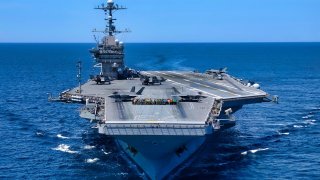The U.S. Navy Might Not Have Enough Aircraft Carriers
The U.S. Navy faces challenges in maintaining its current fleet of aircraft carriers, stretched thin by global deployments and constrained by high construction and maintenance costs. With 11 nuclear-powered carriers, but only about half fully available at any time, the Navy is evaluating its future strategy amidst financial and logistical limitations.
Summary: The U.S. Navy faces challenges in maintaining its current fleet of aircraft carriers, stretched thin by global deployments and constrained by high construction and maintenance costs. With 11 nuclear-powered carriers, but only about half fully available at any time, the Navy is evaluating its future strategy amidst financial and logistical limitations. The introduction of Ford-class carriers seeks to modernize the fleet, but the Navy is also considering smaller vessels as potential alternatives. Recruiting challenges and industrial base pressures further complicate expansion efforts, signaling a period of adjustment and strategic reassessment for carrier force management.
The U.S. Navy Has Aircraft Carrier Challenges
Aircraft carriers remain the largest capital warships in the world today – and there are actually quite a few of the vessels in service. Including amphibious assault ships (LHA), there are now 47 active aircraft carriers in the world, operated by fourteen navies. More than a third of the flattops are in service with the United States Navy, which maintains eleven nuclear-powered CATOBAR carriers, including ten Nimitz-class and one Gerald R. Ford-class.
In addition, the U.S. Navy operates two America-class LHAs of a planned 11; as well as seven Wasp-class ships – while an eighth was seriously damaged by fire and subsequently decommissioned in 2021.
The current U.S. fleet of Nimitz-class carriers will also be followed into service, and replaced on a one-for-one basis by future carriers of the Gerald R. Ford-class, which are more automated as part of an effort to reduce the amount of funding required to maintain and operate the vessels. In its 2018 report to Congress, the Navy stated its intention to maintain a 12 CVN force as part of its 30-year acquisition plan.
The current plan calls for Ford-class carriers to then replace the Nimitz-class flattops on a one-for-one basis over the next four decades. Yet, it is also just as likely that the United States Navy will never actually replace each of its Nimitz-class carriers and instead could seek to develop smaller warships that could still do the job.
Are There Enough Aircraft Carriers?
The question likely being considered by U.S. naval planners is whether there are now enough carriers in service right now. The short answer is that the U.S. carrier fleet – despite its size – is spread thin.
The Nimitz-class aircraft carrier USS Dwight D. Eisenhower (CVN-69) has remained in the Middle East engaging the Houthi rebels in Yemen, while the first-in-class USS Gerald R. Ford (CVN-78) saw its deployment to the Mediterranean extended twice. The latter carrier is now undergoing maintenance availability, primarily to address software upgrades and other general touch-ups.
Such post-deployment overhauls and refits are routine and necessary. The longer the carrier is deployed, the longer it then spends in port. And as it stands just three carriers are now able to respond to developments in the Indo-Pacific.
The USS Nimitz (CVN-68) is set to visit South Korea, while USS Ronald Reagan (CVN-76) remains the U.S. Navy's only forward-based carrier strike group homeported at Yokosuka, Japan – but is set to be replaced by USS George Washington (CVN-73) later this year. The latter warship recently completed her four-year Refueling and Complex Overhaul (RCOH) that began in August 2017 – and remained out of service for much of last year. USS John C. Stennis (CVN-74) is next up for the scheduled RCOH, which will be completed sometime by the end of the decade.
In other words, while the U.S. Navy may have 11 nuclear-powered carriers on paper, it would seem that only half are ever fully available – leaving the sea service stretched thinner than it would like.
Why Not Build More?
The next obvious question would be to build more carriers. Yet, there are several factors why that isn't even close to an option.
As Brandon J. Weichert noted last month for The National Interest, "Today, the average cost for building a nuclear-powered, aircraft carriera supercarrier, such as America's new Gerald R. Ford-class is upwards of $13.3 billion. It costs an additional hundreds of millions of dollars to maintain. Previous models are only slightly less expensive."
Weichert added, "Their complexity and exorbitant cost make them not only tempting targets for rivals, but if they were to be destroyed or seriously damaged in combat, it would effectively make them a wasting asset. Billions of dollars would be lost and the US Navy’s power projection abilities would be seriously degraded."

In other words, the United States can't afford to lose such a high-value target in a war, but it also can't afford to build more. And this only factors in the monetary cost. The United States Navy – like nearly all the branches of the U.S. military – is struggling to meet recruiting quotas.
It barely has the sailors needed to operate the current fleet, which is at the smallest it's been since the First World War. Yet, short of conscription, it is doubtful the U.S. Navy would have the sailors for even a few more supercarriers.
America Can Barely Build the Current Carriers
The final consideration is that today's supercarriers take years to build, and even if the U.S. suddenly had the money and the manpower, it lacks the facilities to build any additional carriers.
In January, the Aircraft Carrier Industrial Base Coalition (ACIBC) warned that rough waters lay ahead following a survey it conducted last November. The trade association represents about 2,000 vendors from across the country that make up the supply chain for Huntington Ingalls Industries (HII), the largest military shipbuilding company in the United States.
Those companies provide parts and services for the construction and maintenance of U.S. Navy aircraft carriers, and according to the survey, it is a critical moment for the industry as 95% of the vendors have faced challenges due to rising costs from inflation, while 79% have experienced raw material cost increases of at least 7%. More than one in 10 (91%) of vendors surveyed said they faced challenges as a result of material availability or delivery, and 76% said they directly experienced an increase in the amount of time it takes to build and deliver their products.
Workforce issues also remain a serious problem, as 85% of the firms said they continue to face challenges in hiring, training, and retaining their respective workforces. Moreover, 32% said that workforce-related challenges have had a detrimental impact on their ability to fulfill contracts.
Conclusions – The U.S. Navy is Spread Thin, Get Used to It
The takeaway is that the future Ford-class carriers are already running behind schedule, but hopefully, they won't be as over budget as the lead vessel of the class. The Navy is also scaling back on its mid-to-long-term projects to focus on the near term.

That will mean relying on the carriers it has, and hoping that there aren't multiple crises and that no carrier is suddenly lost to overseen circumstances.
Author Experience and Expertise: Peter Suciu
Peter Suciu is a Michigan-based writer. He has contributed to more than four dozen magazines, newspapers, and websites with over 3,200 published pieces over a twenty-year career in journalism. He regularly writes about military hardware, firearms history, cybersecurity, politics, and international affairs. Peter is also a Contributing Writer for Forbes and Clearance Jobs. You can follow him on Twitter: @PeterSuciu. You can email the author: [email protected].
All images are from the U.S. Navy.


